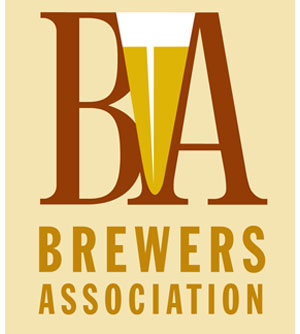
In 2013, craft brewers reached 7.8 percent volume of the total U.S. beer market, up from 6.5 percent the previous year. Additionally, craft dollar share of the total U.S. beer market reached 14.3 percent in 2013, as retail dollar value from craft brewers was estimated at $14.3 billion, up from $11.9 billion in 2012.
“With this stellar year, craft has now averaged 10.9 percent growth over the last decade,” said Bart Watson, staff economist, Brewers Association. “Beer drinkers are excited about what small and independent brewers are offering and that is evidenced by the rising production and sales of the craft segment.”
Additionally, the number of operating breweries in the U.S. in 2013 totaled 2,822, with 2,768 of those considered craft, demonstrating that craft breweries make up 98 percent of all U.S. operating breweries. This count includes 413 new brewery openings and 44 closings. Combined with already existing and established breweries and brewpubs, craft brewers provided 110,273 jobs, an increase of almost 2,000 from the previous year.
“Openings of brewing facilities continue to far outpace closings, demonstrating that the demand for high-quality, local, fuller-flavored beers is only increasing,” added Watson. “The geographic diversity of openings and production growth shows the national nature of this movement. In towns all across the country, craft brewers are creating jobs, delivering innovative products, advancing the beverage of beer and strengthening their local economies.”
Note: Numbers are preliminary. The Brewers Association will release the list of Top 50 craft brewing companies and overall brewing companies by volume sales on March 31. Additionally, a more extensive analysis will be released during the Craft Brewers Conference in Denver, Colorado from April 8-11. The full 2013 industry analysis will be published in the May/June 2014 issue of The New Brewer, highlighting regional trends and sales by individual breweries.
┬╣ The definition of a craft brewer as stated by the Brewers Association: An American craft brewer is small, independent, and traditional. Small: Annual production of 6 million barrels of beer or less (approximately 3 percent of U.S. annual sales). Beer production is attributed to the rules of alternating proprietorships. Independent: Less than 25 percent of the craft brewery is owned or controlled (or equivalent economic interest) by a beverage alcohol industry member that is not itself a craft brewer. Traditional: A brewer that has a majority of its total beverage alcohol volume in beers whose flavor derives from traditional or innovative brewing ingredients and their fermentation. Flavored malt beverages (FMBs) are not considered beers.
About the Brewers Association:
The Brewers Association is the not-for-profit trade association dedicated to small and independent American brewers, their beers and the community of brewing enthusiasts. The Brewers Association (BA) represents more than 70 percent of the brewing industry, and its members make more than 99 percent of the beer brewed in the U.S. The BA organizes events including the World Beer Cup┬«, Great American Beer Festival┬«, Craft Brewers Conference & BrewExpo America┬«, SAVORÔäá: An American Craft Beer & Food Experience and American Craft Beer Week┬«. The BA publishes The New Brewer magazine and its Brewers Publications division is the largest publisher of contemporary and relevant brewing literature for today’s craft brewers and homebrewers.
Beer lovers are invited to learn more about the dynamic world of craft beer at CraftBeer.com and about homebrewing via the BA’s American Homebrewers Association. Follow us on Twitter.
The Brewers Association is an equal opportunity employer and does not discriminate on the basis of race, color, national origin, gender, religion, age, disability, political beliefs, sexual orientation, or marital/familial status. The BA complies with provisions of Executive Order 11246 and the rules, regulations, and relevant orders of the Secretary of Labor.
